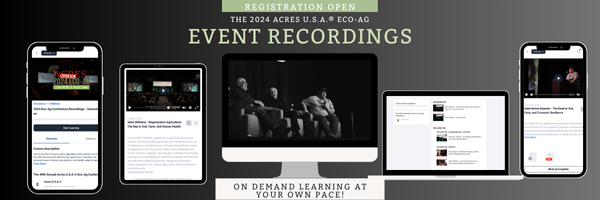Understanding how productive your land once was will help you make holistic management decisions to benefit generations to come
Many regenerative farmers are digging holes and looking down. But should we be looking up too? What is the guiding star that leads you on the right path when you must make a big decision? What are you trying to regenerate, and what is possible?
Before we started down the path of regenerative organic farming in 2007, my family created a “holistic context,” or a description of the lifestyle we wanted, asking ourselves what our land needed to be like to support that lifestyle for us and for our unborn grandchildren. This would guide our decisions to move us toward the green, productive, restored landscape that we envisioned.
Our farm’s natural capital — that is, our land’s ability to produce — had been drawn down by the growing of continuous corn on some fields since the 1970s. There were hardly any earthworms in these fields when we bought the land in 1997. As we intentionally built our soils back up with holistic planned grazing and grew more pasture for our cattle, we were providing more food and habitat for wildlife too. The returning bobolinks, Karner blue butterflies, native pollinators, peepers and bluebirds gave us a glimpse of the species richness that was possible for our land.
Support authors and subscribe to content
This is premium stuff. Subscribe to read the entire article.


















